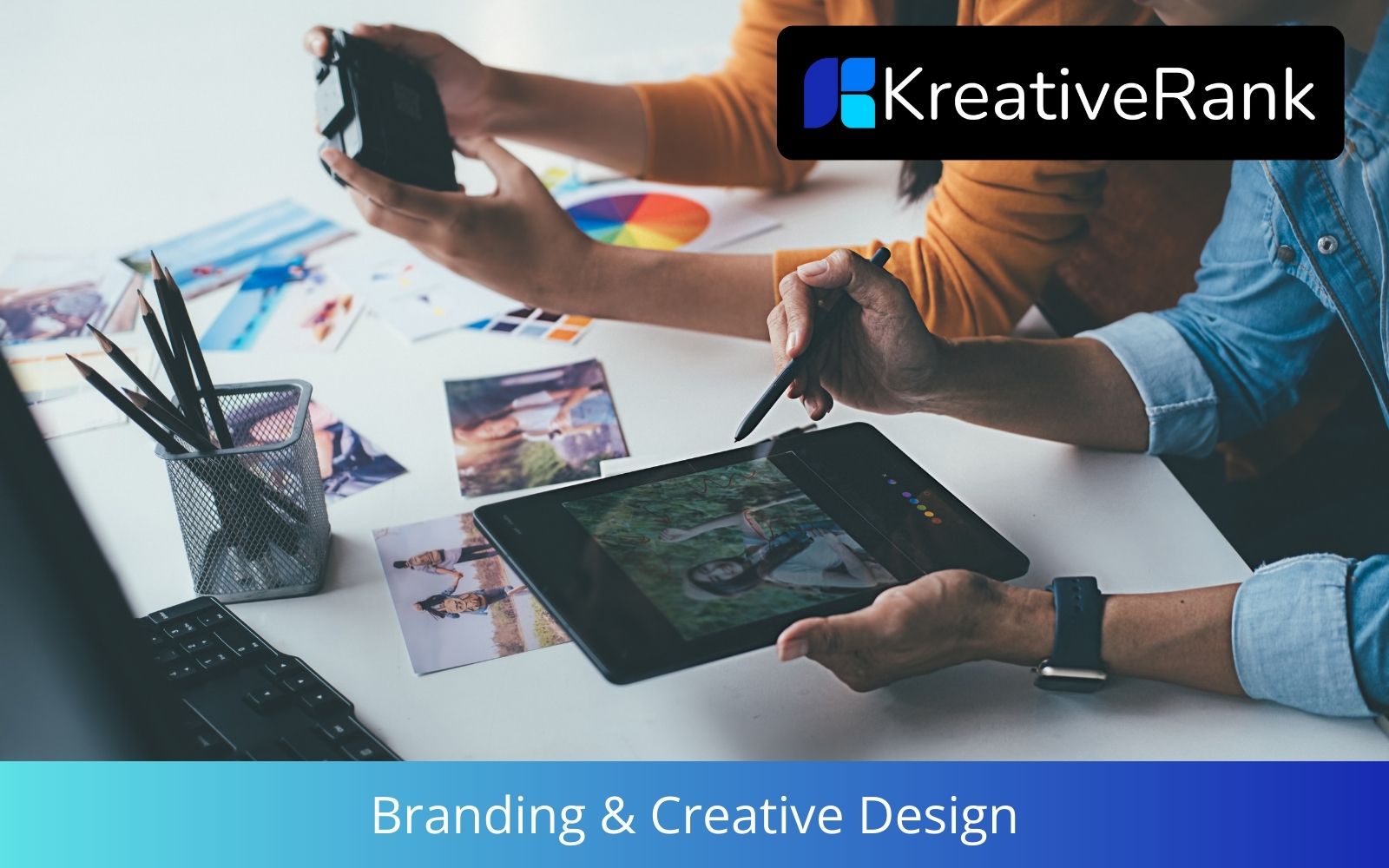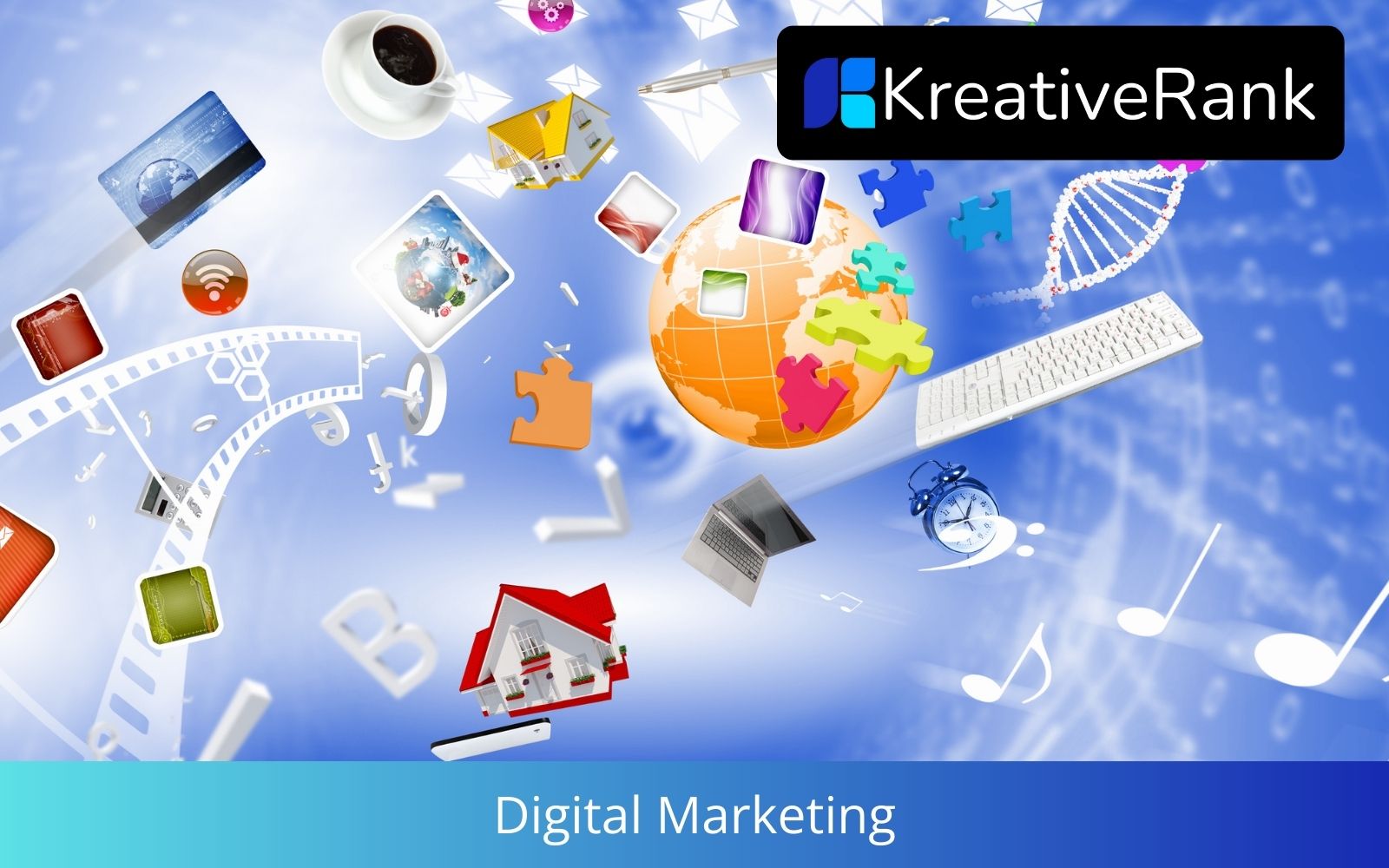Introduction
Imagine walking down a crowded supermarket aisle. Among the countless boxes, cans, and bottles, your eyes lock onto a single brand you know and trust. Why did you pick that one? The answer often lies in memorable brand identity. In today’s marketplace, a distinctive and well-crafted brand identity is more than a pretty logo; it’s the bedrock of businesses that not only survive but thrive.
We understand that brand identity design isn’t just about making something look good; it’s about creating a visual language that speaks directly to your ideal customers. Through our work with Kreative Rank’s brand identity services, we’ve learned that the most effective brands don’t just catch the eye but capture hearts and drive purchasing decisions.
In this article, we’ll dive into the essential building blocks of brand identity design, revealing how you can create a brand that’s not just seen, but remembered, and purchased. Along the way, we’ll explore what brand identity really means, how to approach designing one, common pitfalls, and insights from helping businesses build brands that truly connect.
Understanding Brand Identity: More Than a Pretty Face
Brand identity goes far deeper than visual aesthetics. It’s the sum of how your brand looks, sounds, and feels to your audience.
What is Brand Identity?
- The collection of elements: logo, colors, typography, voice, and imagery—that together represent how a business wants to be perceived.
- It’s rooted in your business’s values, mission, and personality.
Brand Identity vs. Brand Image
Many people confuse brand identity with brand image. The key difference?
- Brand identity: What you present to the world.
- Brand image: How the world actually perceives you.A strong brand identity bridges the gap between the two, ensuring what you say matches what others feel.
The Role of Consistency
“Consistency in brand identity isn’t about repetition, it’s about coherence. Every touchpoint should feel like it’s coming from the same trusted source.”
Consistency breeds familiarity, and familiarity, in turn, builds trust. This is what makes a brand memorable and persuasive.
Key Elements of a Memorable Brand Identity
Let’s break down what goes into crafting an identity that lingers in people’s minds, and compels them to act.
Logo: The Signature Symbol
Think of logos like the face of your brand. Consider the ubiquitous golden arches of McDonald’s or the Nike swoosh—symbols that stand out even at a glance.
- Keep it simple: Overcomplicating can make logos forgettable or hard to reproduce.
- Make it adaptable: A logo should work on everything from a business card to a billboard.
Color Palette and Typography: Setting the Mood
Colors and fonts shape emotion and attention.
- Colors trigger associations—blue for trust, red for excitement, green for growth.
- Fonts reflect personality—serif fonts can feel classic, while sans-serif options often look modern.
Color psychology in branding shows that we make snap decisions based on colors, even before we consciously process a message.
Voice and Messaging: The Way You Speak
Every brand “talks,” whether in social media captions or product descriptions.
- Define your brand voice: Is it friendly and approachable or authoritative and expert?
- Be authentic: People sense when brands try too hard or sound insincere.
A quick anecdote: years ago, I helped rebrand a local bakery. We ditched stiff, generic messaging (“Fresh breads daily”) for language that felt like home (“Warm bread, made every morning, waiting for you”). The response? Sales climbed as customers felt a genuine connection
Imagery and Visual Cues: Photos, Icons, and More
The images you choose become part of your brand’s story.
- Use visuals that resonate with your audience’s daily life or aspirations.
- Stay consistent; random styles dilute your brand.
Consider an eco-friendly skincare brand that uses natural textures and earthy photos. Customers don’t just remember the logo, they recall the feeling those images evoke.
The Process: Steps to Building a Durable Brand Identity
Designing your brand identity is like assembling a puzzle. Here’s how to make sure all the pieces fit.
1. Research and Define Your Brand
Before sketching logos or picking fonts, dig deep:
- Who is your target audience?
- What are your brand’s values?
- Who are your competitors, and how do they present themselves?
2. Craft Your Visual Elements
- Develop your logo, color palette, and typography.
- Test variations in different settings, print, web, and merchandise
3. Set Guidelines for Use
Document everything in a brand guidelines manual. This helps future-proof your brand as you grow or bring on new team members.
- Logo usage rules
- Palette and font specifications
- Voice and tone direction
4. Roll It Out; Everywhere
- Update all materials: packaging, website, social media, and signage.
- Train staff to use the identity consistently in every interaction.
5. Gather Feedback and Refine
After launch, listen carefully. Are people responding as you hoped? Be adaptable—sometimes, a tweak in colors or better alignment in messaging can make a big difference.
Common Pitfalls, and How to Dodge Them
Even experienced businesses stumble over these hurdles:
- Copycatting competitors: Inspiration is fine, but mimicry leaves you lost in the crowd.
- Neglecting the target audience: Designing for yourself, not your customers, is a recipe for disconnecting.
- Ignoring brand evolution: Stubbornly clinging to the “old way” can make your brand feel outdated. The key is to evolve while respecting your foundation.
“It’s easy to fall in love with your first logo. But don’t be afraid to adapt as your business and your customers change.”
Real-World Inspiration: Brands That Got It Right
Airbnb: A Story-Driven Makeover
In 2014, Airbnb refreshed its identity, including the simple but evocative “Bélo” symbol. The rebrand focused on warmth and belonging, aligning with their mission to create a sense of global community. They didn’t just change their look—they changed the narrative, resulting in massive growth.
Innocent Drinks: Personality-Packed Packaging
This juice and smoothie company doesn’t just sell beverages—they sell a smile. Their quirky, fun packaging and conversational tone have fostered intense brand loyalty in the UK and beyond.
Conclusion
Takeaways: Crafting a Brand That Lasts
The best brands aren’t built on looks alone—they’re crafted with care, consistency, and a clear sense of self. At Kreative Rank, we believe that exceptional brand identity design comes from understanding both your business essence and your customers’ hearts.
If you’re ready to design a brand identity that resonates and sells, remember to
- Start with honest introspection and research
- Build out all the elements—visual, voice, and experiential
- Keep your audience at the center of every choice
- Anchor everything in authenticity and consistency
- Be willing to grow and adapt as times (and tastes) change
Ready to create a brand identity that truly connects with your customers? Kreative Rank’s brand identity design services focus on building memorable brands that drive real business results. [Contact our team] to discuss how we can help craft a brand that not only looks professional but genuinely resonates with your target audience.
“Your brand isn’t your logo, your website, or your colors—it’s the feeling people get when they interact with your business.” That’s exactly what we help you create at Kreative Rank.



